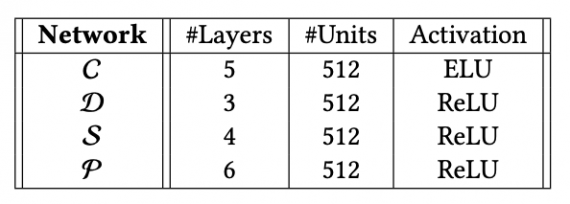汇编指令lmm
Researchers at Ubisoft have proposed an alternative to the Motion Matching algorithm for automated character animation. The Learned Motion Matching approach combines the advantages of the classic Motion Learning algorithm and neural networks. The resulting model does not store animation data or additional metadata in memory, unlike the standard MM algorithm. At the same time, the LMM model retains quality, control, and fast iteration time, as in the MM algorithm.
Ubisoft的研究人员提出了一种用于自动角色动画的运动匹配算法的替代方案。 学习运动匹配方法结合了经典运动学习算法和神经网络的优点。 与标准MM算法不同,生成的模型不在内存中存储动画数据或其他元数据。 同时,与MM算法一样,LMM模型保留了质量,控制和快速的迭代时间。
过去方法的局限性 (Limitations of the past approach)
Despite the fact that neural network generative models for character animation are capable of learning compact controllers, methods like Motion Matching are still the most popular in the gaming industry. Popularity is driven by adaptability, prediction quality, low preprocessing time, and visual quality. However, the memory cost of such approaches grows linearly with the amount of data used. This leads to a balance between animation diversity and production budget. The researchers propose to combine the neural network approach and the MM algorithm. This solves the linear scalability problem.
尽管用于角色动画的神经网络生成模型能够学习紧凑型控制器,但诸如运动匹配之类的方法仍是游戏行业中最受欢迎的方法。 流行是由适应性,预测质量,较低的预处理时间和视觉质量驱动的。 但是,这种方法的存储成本随着所使用的数据量线性增长。 这导致了动画多样性和制作预算之间的平衡。 研究人员提出将神经网络方法和MM算法相结合。 这解决了线性可伸缩性问题。
学习的运动匹配算法如何工作 (How the Learned Motion Matching algorithm works)
The LMM algorithm consists of three parts, just like the standard MM algorithm:
LMM算法由三部分组成,就像标准的MM算法一样:
- Projection; 投影;
- Decompressor; 解压缩器
- Going to the next step (stepping) 进行下一步(步进)



模型性能评估 (Model performance evaluation)
The researchers compared the proposed algorithm with two basic algorithms: Motion Matching and Motion Matching with the Decompressor. Below you can see that the Learned Motion Matching algorithm uses less memory. This makes the model faster. However, the model was trained on a GPU, while the underlying algorithms were trained on a CPU.
研究人员将提出的算法与两个基本算法进行了比较:运动匹配和带解压缩器的运动匹配。 在下面您可以看到,学习型运动匹配算法使用的内存更少。 这使模型更快。 但是,模型是在GPU上训练的,而底层算法是在CPU上训练的。

对深度学习感兴趣? (Interested in Deep Learning?)
If you found this article helpful, click the💚 or 👏 button below or share the article on Facebook so your friends can benefit from it too.
如果您认为本文有帮助,请单击下面的click或💚按钮或在Facebook上分享该文章,以便您的朋友也可以从中受益。
汇编指令lmm






















 1313
1313











 被折叠的 条评论
为什么被折叠?
被折叠的 条评论
为什么被折叠?








